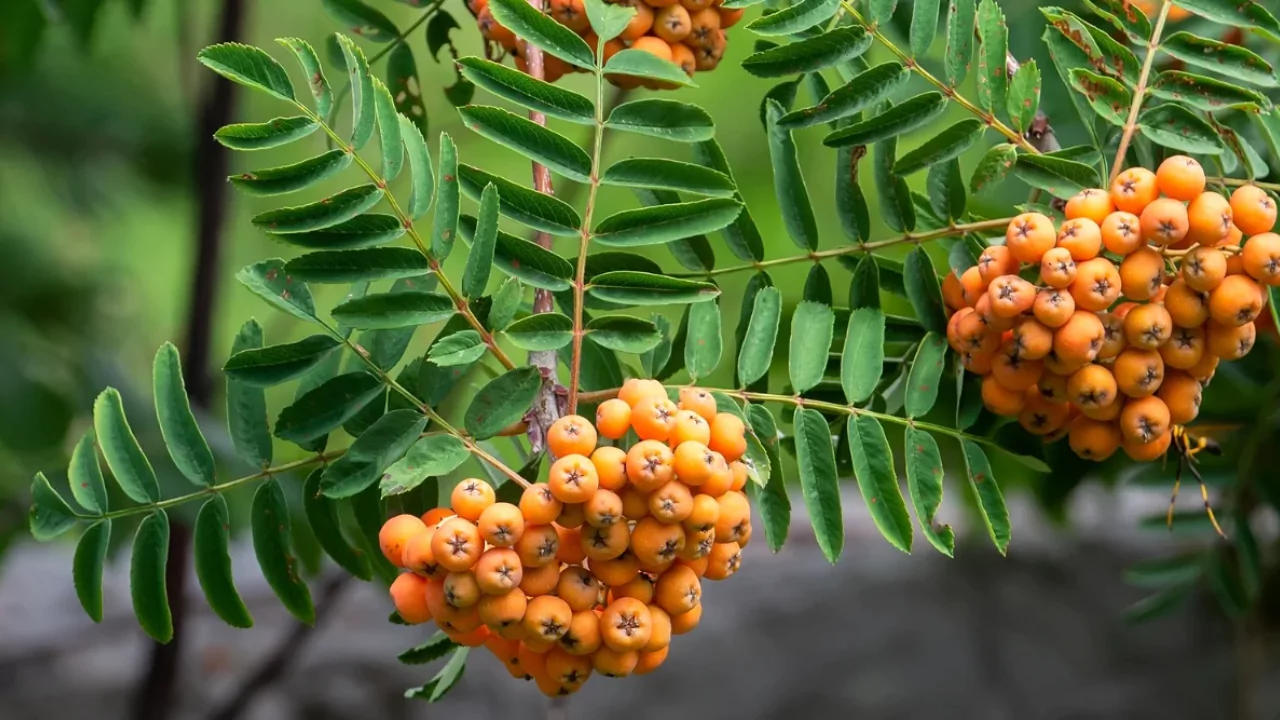
The bonny rowan tree is a little mountain ash tree renowned for her soft and delicate fern-shaped leaves. Apart from being strikingly beautiful—making the tree an excellent choice for ornamental planting—she also provides ample shade during summer.
Generously, she blossoms in spring with creamy white flowers and round reddish-orange berries follow flowering. When autumn arrives and it is time to rake the dainty leaves, the rowan will delight with splendid fall color making her beauty well worth the effort.
The rowan tree (Sorbus aucuparia) is the most commonly cultivated species of ash tree. It is found growing feral all across Northern Europe in some of the most difficult glens and crags and can be located within USDA Hardiness Zones 3 to 5. Additionally, the berries are a staple food source for migrating birds and other wild animals.
The rowan holds a significant place in history rich with lore. It was considered protective and planted in cottage and mountain gardens for centuries. With its mystical virtues, it is believed to ward off witches and evil spirits. It is also called the ‘Tree of Good Luck.’ Its most benevolent gift may be the sheer beauty the rowan tree offers throughout the seasons.
How to Plant and Care for a Rowan Tree
Rowan trees are best planted in the latest fall when the tree is dormant. Planting sites should be fully sunny or partially shaded. Planting requires digging a hole three times the width of the root ball, placing the tree in the hole, and then backfilling with soil. Although well-draining soil is ideal, exposure to rocky and clay soils is not an issue for rowan trees. After deep watering, provide support with stakes.
Once the roots are established, water moderately and maintain slightly moist soil. Rowan trees do well in harsh weather conditions like drought, strong winds, and the cold.
A rowan tree may need to be pruned when young to remove vertical branches or those that crossover other branches. Later on, in the tree’s mature stage, it will no longer need pruning.
Despite the rowan’s berries having a bitter taste, they can be transformed into a delectable jelly. Moreover, if left untouched by birds for a while after frost, the berries do sweeten, making them easier to harvest.
Rowan Tree Pests and Problems
Although the rowan tree is quite resilient, it does face some pests and problems. The tree is susceptible to a few diseases but only when out of its preferred cold region habitats. In warmer climates, the cold runner is susceptible to fire blight. This bacterial disease has no cure beside branch pruning.
Occasionally, lichen may grow on the bark of the rowan tree, but this is seldom an issue.
While this problem may deter some, others may be attracted to this feature. The rowan tree is a favorite among deer who love gobbling the leaves, making it convenient for some while problematic for other gardeners.